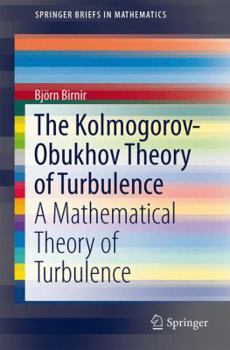The Kolmogorov-Obukhov Theory of Turbulence: A Mathematical Theory of Turbulence
Turbulence is a major problem facing modern societies. It makes airline passengers return to their seats and fasten their seatbelts but it also creates drag on the aircraft that causes it to use more fuel and create more pollution. The same applies to cars, ships and the space shuttle. The mathematical theory of turbulence has been an unsolved problems for 500 years and the development of the statistical theory of the Navier-Stokes equations describes turbulent flow has been an open problem. The Kolmogorov-Obukhov Theory of Turbulence develops a statistical theory of turbulence from the stochastic Navier-Stokes equation and the physical theory, that was proposed by Kolmogorov and Obukhov in 1941. The statistical theory of turbulence shows that the noise in developed turbulence is a general form which can be used to present a mathematical model for the stochastic Navier-Stokes equation. The statistical theory of the stochastic Navier-Stokes equation is developed in a pedagogical manner and shown to imply the Kolmogorov-Obukhov statistical theory. This book looks at a new mathematical theory in turbulence which may lead to many new developments in vorticity and Lagrangian turbulence. But even more importantly it may produce a systematic way of improving direct Navier-Stokes simulations and lead to a major jump in the technology both preventing and utilizing turbulence.
Format:Paperback
Language:English
ISBN:1461462614
ISBN13:9781461462613
Release Date:January 2013
Publisher:Springer
Length:108 Pages
Weight:0.44 lbs.
Dimensions:0.3" x 6.1" x 9.2"
Customer Reviews
0 rating





